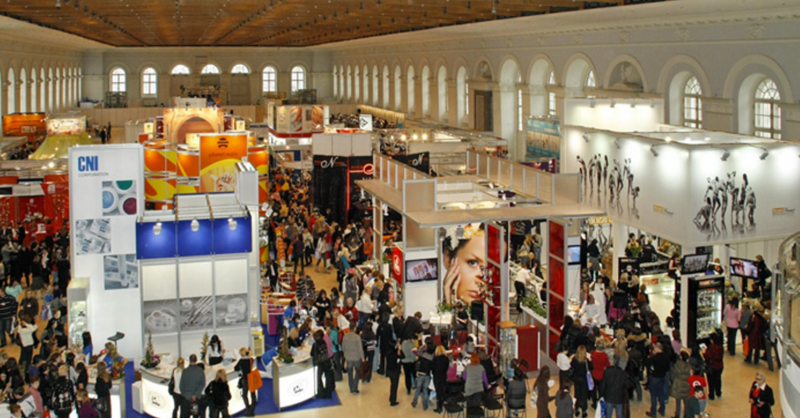Trade shows continue to be a fantastic way to promote your products and services and attract new customers. However, picking the right event isn’t always easy. Before selecting a trade show that best meets your exhibiting needs, it helps to be aware of all the different types that are available and make sure your attendance will be worthwhile in terms of both time and money. Here are a few of our best tips to help you choose the right trade show!
- Research
First things first: research. You’ll want to ensure a trade show is the correct match for your business before deciding to participate. When searching, you should be able to find all the details on the trade show’s website, including exhibitor lists, attendee demographics, and floor layout. Additionally, the majority of show organizers provide sell sheet outlining the key benefits of exhibiting at their event. Make sure the decision-makers will attend the event and take into account the audience you hope to attract. Last but not least, call the show management staff to ask for a pass to roam the floor. You can get a better sense of whether an event is a good fit for your brand by attending it before making the final investment.
- Consider your goals
What goals do you have for the trade show? Do you want more people to know about your business? Are you looking to create new business-to-business connections and sales leads? Do you wish to connect with business experts and current clients? Are you looking for a venue to introduce your product? Where you choose to display will depend on what you intend to gain from going to a trade fair.
The more specific your goals are, the simpler it will be for you to determine if an event might help in accomplishing them. Attend events that will help you achieve your goals. Ask show management for assistance if you need help identifying what those opportunities might be. Show management teams are typically eager to collaborate with exhibitors to produce something fresh. Give them your problems to solve, and see what they have to offer.
- Examine the list of exhibitors
To find out which companies are exhibiting at a specific event, consult the exhibitor list. This reveals information about other attendees and gives you a glimpse of your competition. Viewing what other businesses are exhibiting might help you decide whether this event is a good fit for your business, depending on your objectives. See how much of a presence your competitors have at the event by looking at the floor plan. For instance, do your rivals invest more money on sponsorships? You can determine how much business your competitors produce at the event and how much money you will need to invest to compete with them by estimating the size of their financial commitments.
- Talk to other exhibitors
Making connections with other business people in your sector who have previously taken part in the trade show will help you decide if it’s worthwhile to exhibit based on your research. They can provide you with information about attendees and the volume of traffic they receive. They can also assist you in determining how well the show’s promoter fulfills attendees experience and their overall perception of the show.
- Explore opportunities
Seek out chances to extend your presence beyond the confines of your exhibit. Can you host a press conference? With your product launch, a few minutes in front of the media could be crucial. Are there any prospects for sponsorship that would offer more brand touchpoints? Are there any chances for speaking engagements? Does the event provide new products or new exhibitors more exposure? Are there any discounts or incentives available for first-time exhibitors? These improvements might justify your overall investment.
- Consider the location
The price of exhibiting at a trade show is significantly influenced by its location. Greater crowds may attend trade shows held in major cities, but these events are typically more expensive. For labor, drayage, electrical, and other show services, each show organizer will post various pricing per city. In bigger cities, food and housing costs are also more expensive.
Also keep in mind that the farther the event is from you, the more expensive it may be to deliver your exhibit. Finally, compare your target market to the market that the trade show is in. Our data suggest that even for a sizable national event, 60% of trade show attendees often originate from the region of the show. For instance, if the event is held in Orlando, the majority of guests will reside or work in the southeast region of the country. Orlando might not be your best choice if your organization is especially wanting to target a different section of the country.
- Examine your budget
It’s no secret that trade shows require substantial financial investments. Once you have reduced the number of potential shows on your list, it’s time to assess reality. Calculate the cost of exhibiting at each event at the level required to meet the objectives of your business. In certain instances, this can entail a smaller exhibit with speaking engagements and sponsorships. Others might associate a media event with a camera booth. In order to make the right decision and get the most value for your money, be realistic about your needs and your budget.
CONCLUSION
It can benefit your company to attend the right trade show, but it’s crucial to plan ahead and do your research. The ideal trade show accommodates the unique objectives and needs of your business while providing chances to interact with your target market. You may select the ideal show for your requirements and make the most of your time there by following these seven tips. Contact us right away if you’ve decided to begin planning your upcoming trade show appearances! We’d be happy to support your beginning.


